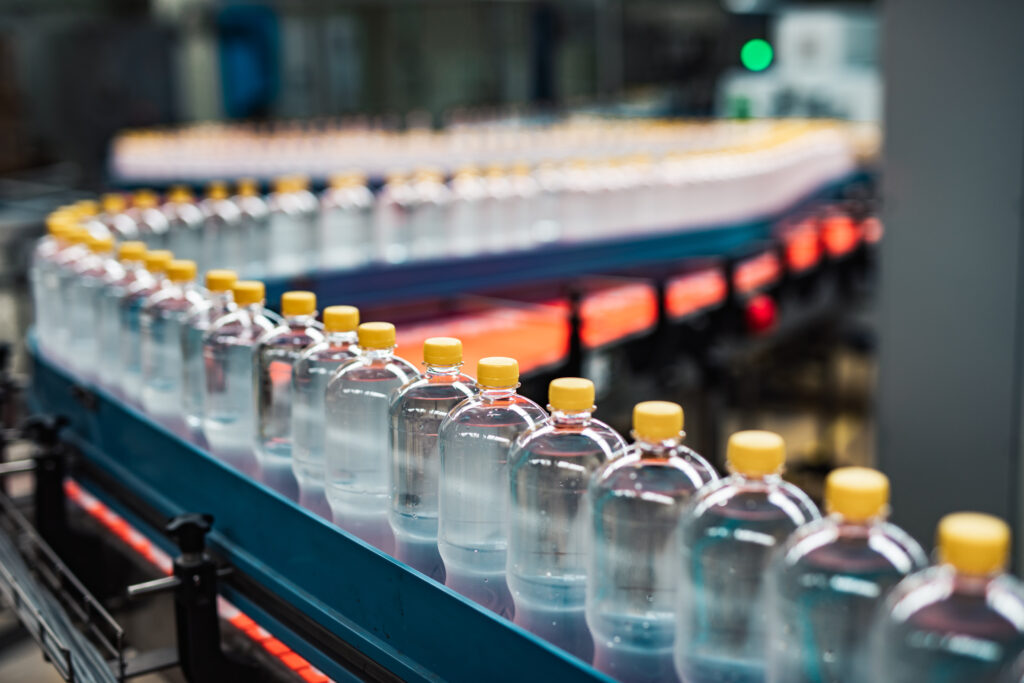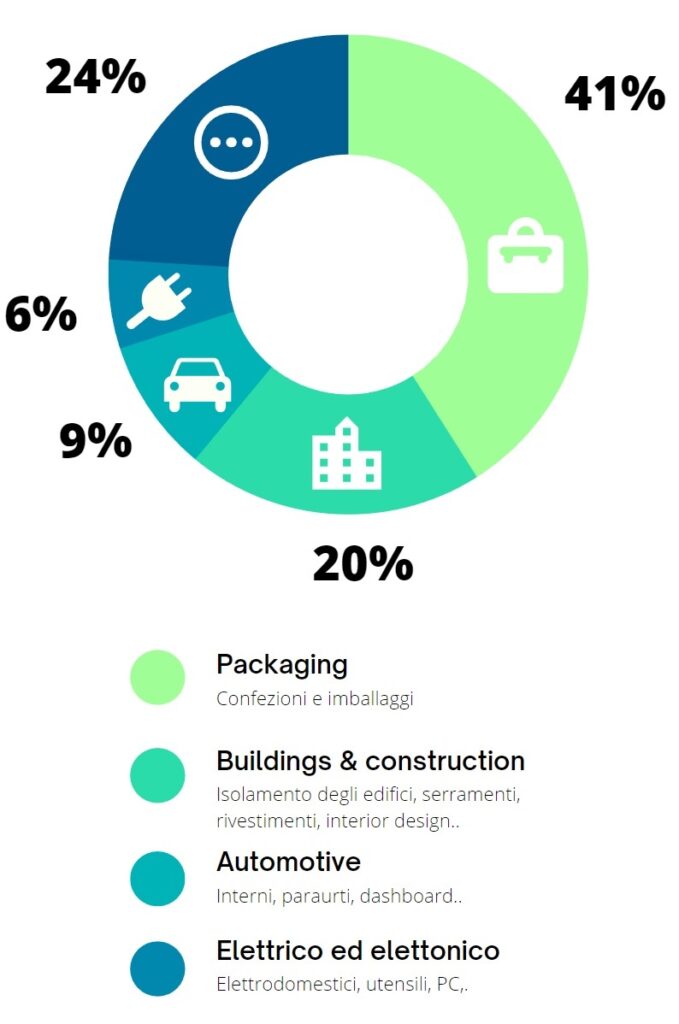The term plastic comes from the ancient Greek “plastikos”, meaning suitable for molding. Thanks to this property, plastic has spread across all sectors and can be found today in many products we use daily… but there’s always room for surprises.

Let’s see where plastic is found and what its typical uses are. Just to mention a few examples, we find plastic in:
- Containers: bottles and caps, bottles, bags, pouches, boxes and buckets, food containers, bins, blister packs, nets for groceries, waste bins, packaging, trays, pots and sub-pots
- Coatings: laminated tablecloths, laminated paper (book covers, menus, business cards..), plastic-coated wire and nets, non-stick pans
- Consumer items: jewelry, toys, furniture items, appliance parts (TVs, fridges, remote controls, washing machines, hair dryers, vacuum cleaners, fans, mixers..), eyeglass frames, outdoor chairs and tables, syringes, plastic gloves, yoga mats, cotton swabs, toothbrushes, covers, bumpers, car interiors, helmets, canoes, inflatables, balloons, straws, clothespins, kettles, balloons, computers, tablets, phones, dishes
- Construction and installation material: building insulation, corrugated cables, water pipes, air ducts, windows, gutters, canopies, floors and tiles, plugs, switches, electrical cable sheathing, electrical panels, switches
- Fabrics: various clothing (mainly polyester, elastane, acrylic, less commonly PVC), bulletproof vests, chair covers, sofa covers, curtains, shoes, public transport seat covers, boat sails
In short, it’s really hard to imagine life today without plastic. Try to stop and count how many plastic objects you see around you. From where I’m writing, I can count over 20 distinct objects. Incredible, isn’t it?
The Use of Plastic in Various Fields
We’ve seen that plastic is present in many (all?) market sectors, but which of these takes the lion’s share? The following pie chart shows the plastic production in 2020 divided by end-use categories.

As seen, an incredibly large share of plastic production is destined for packaging and containers, a whopping 41% of annual demand. The silver and bronze medals in this unglorious competition go to the construction (20%) and automotive (9%) sectors… plastic medals, of course!
This information is crucial for defining sustainability policies, which have aimed over the years to reduce the impact of packaging, discourage single-use (for example, with the Plastic Tax) and increase the share of recycled plastic in construction products. In this direction, our country has moved with the CAM (Environmental Minimum Criteria), but will it be enough?
Key Takeaways
Plastic can take on hundreds and thousands of forms and is used to manufacture containers, consumer goods, and even fabric. Among its uses, the most important is packaging (over 40% of annual demand), followed by use in the construction sector.
Additional Information
Data and infographics (in English): here

